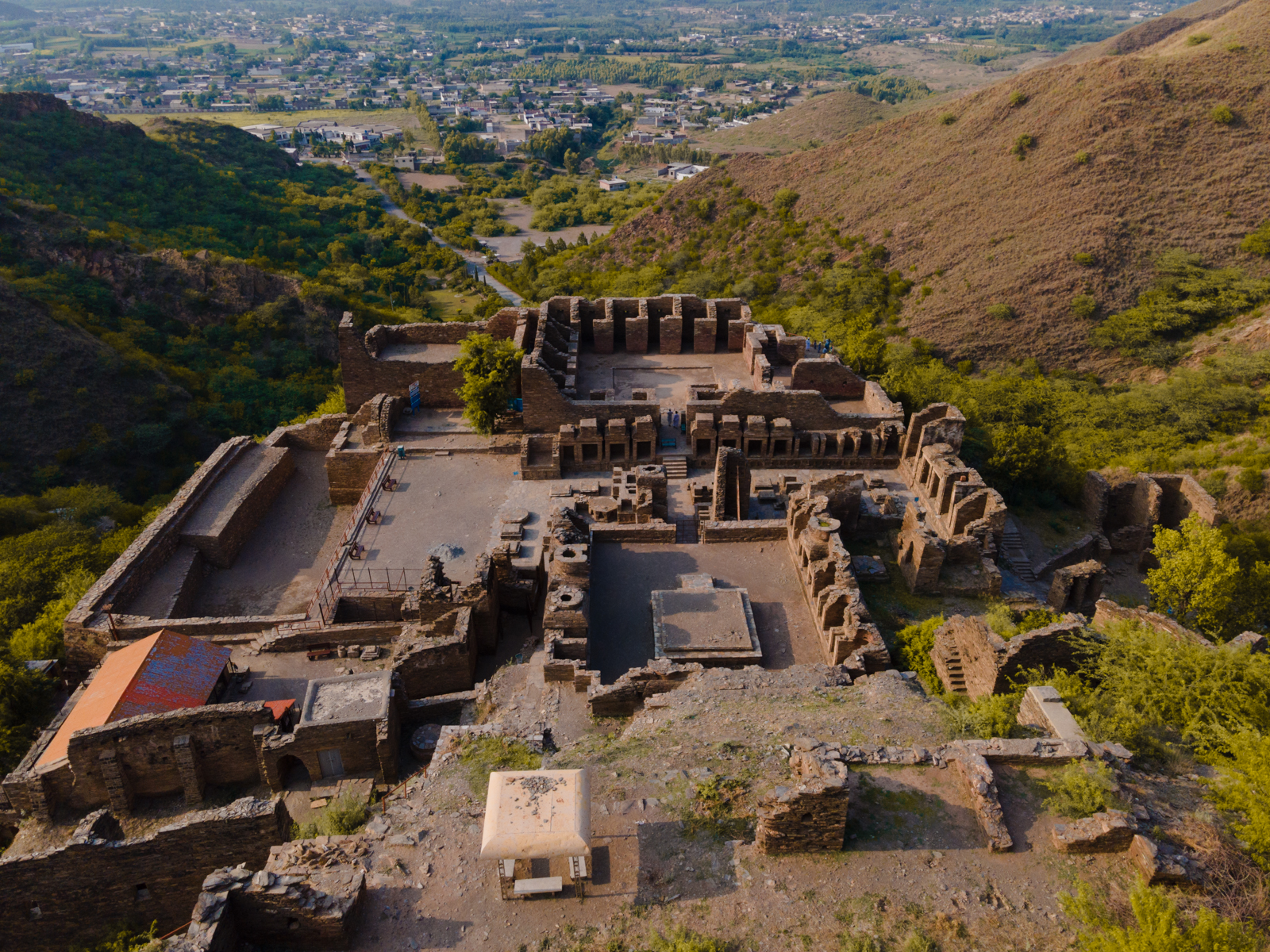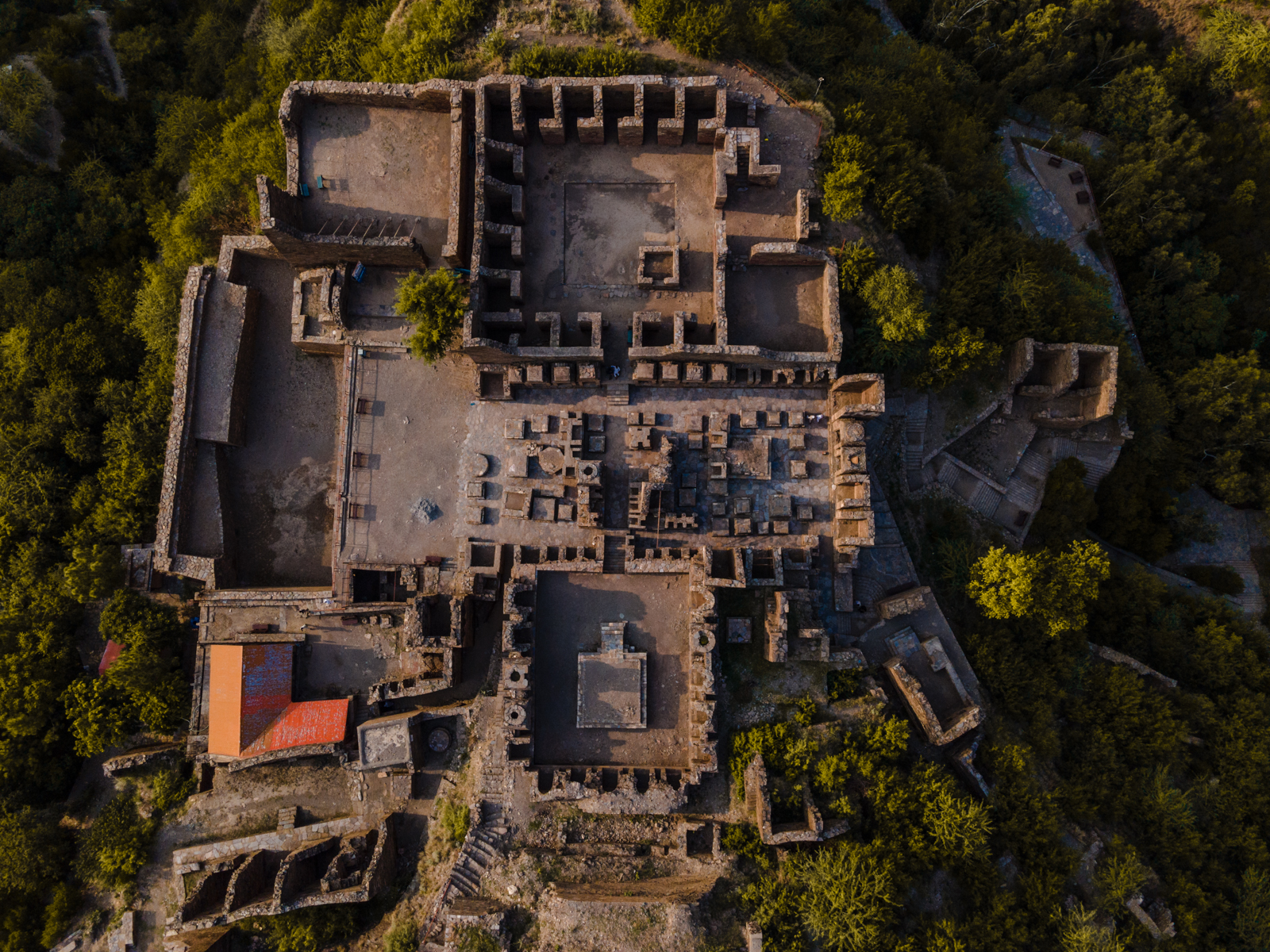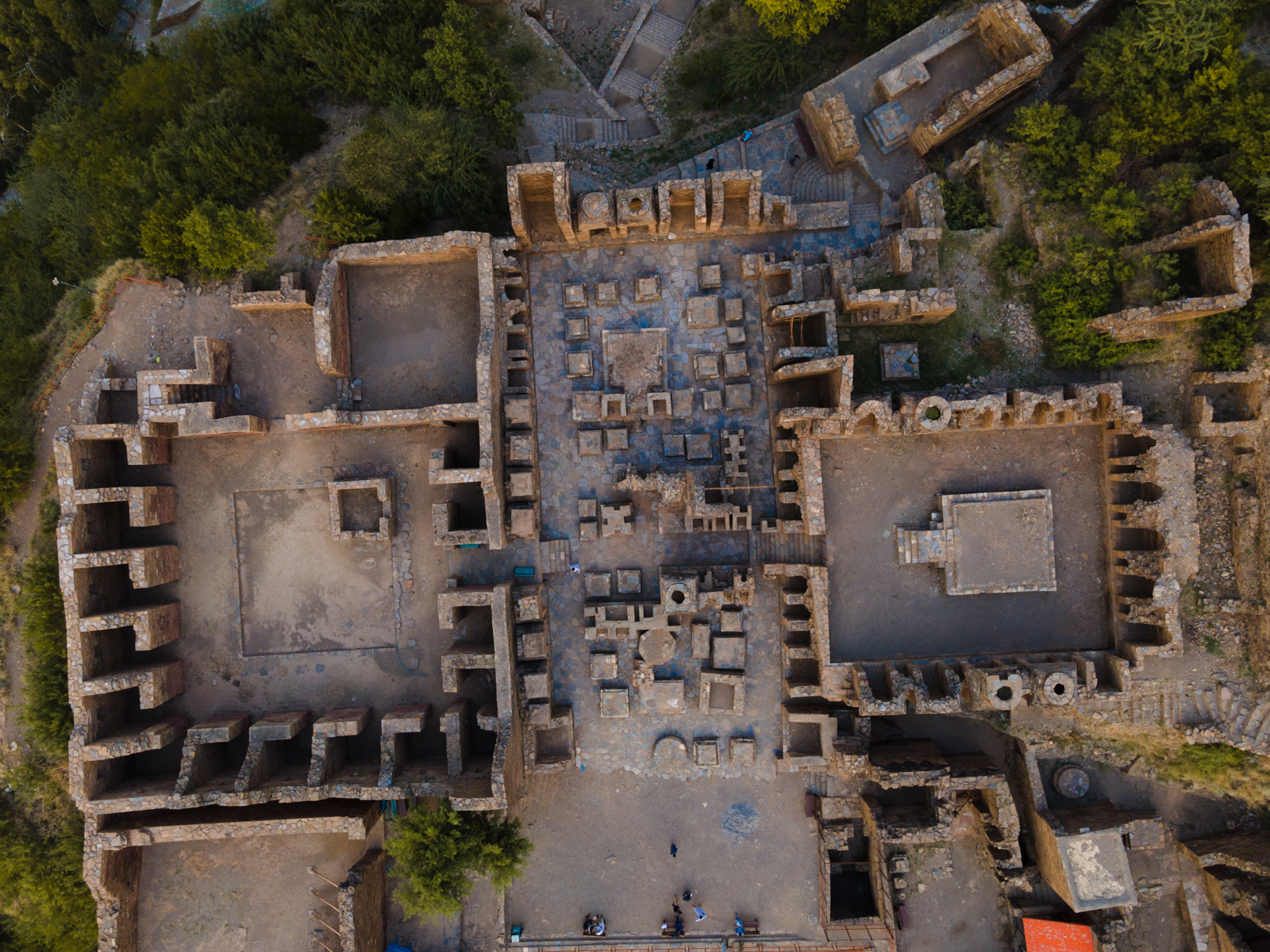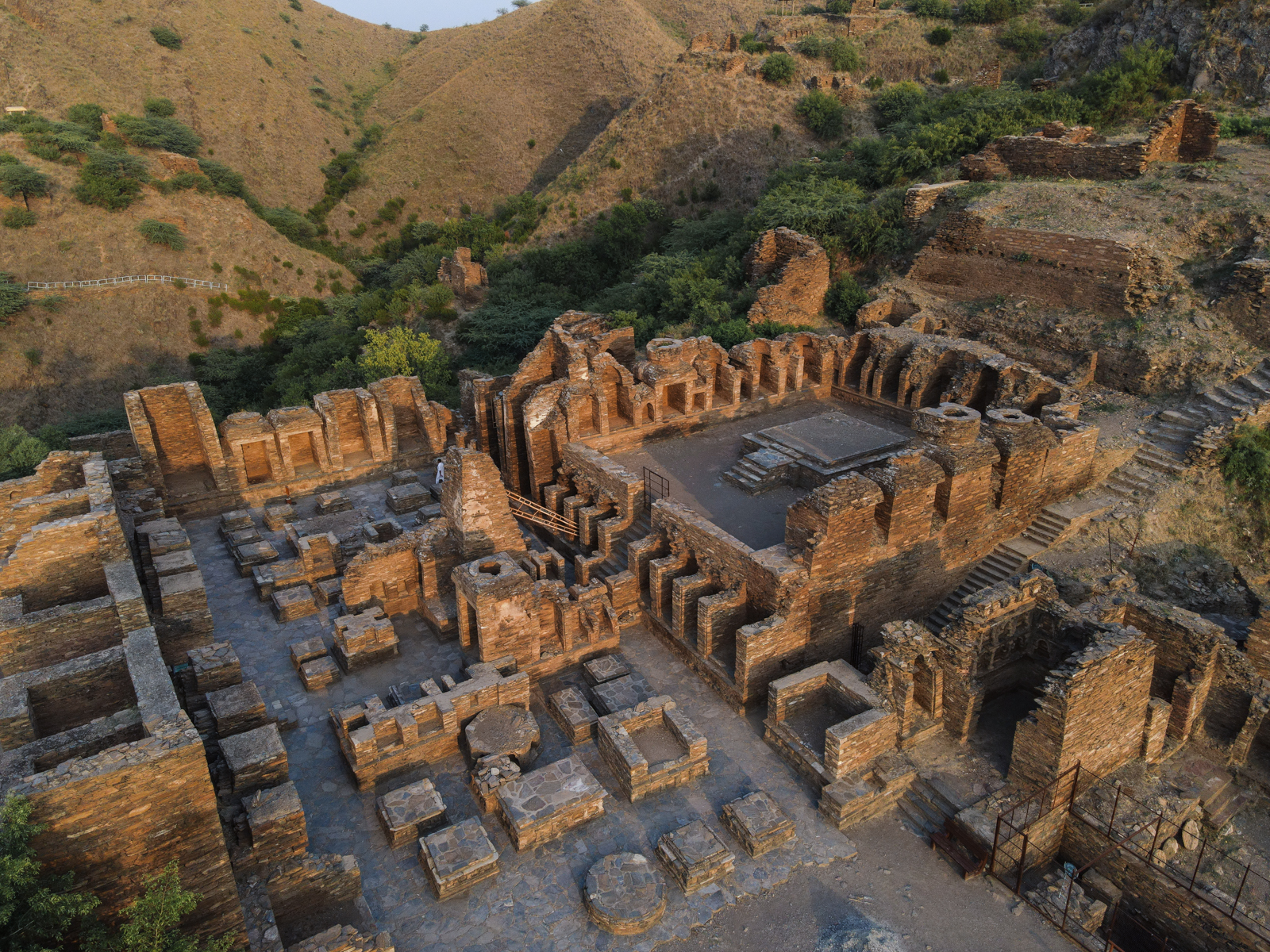



Takhti Bahi:
The World Heritage Site of Takht-i-Bahi is an Indo-Parthian archaeological site of an ancient Buddhist monastery in Mardan, Khyber-Pakhtunkhwa, Pakistan. The site is considered among the most important relics of Buddhism in all of what was once Gandhara, and has been "exceptionally well-preserved."
The complex is regarded by archaeologists as being particularly representative of the architecture of Buddhist monastic centers from its era. Takht-i-Bahi was listed as a UNESCO World Heritage Site in 1980.
The ruins are located about 15 kilometers (9.3 mi) from Mardan in Pakistan's Khyber-Pakhtunkhwa Province. A small fortified city, dating from the same era, sits nearby. The ruins also sit near a modern village known by the same name. It is located around 150 meters (500 ft) atop the small hill and around 2 km (1.2 mi) from the village bazar.
There are four main areas of the Takht i Bahi complex: